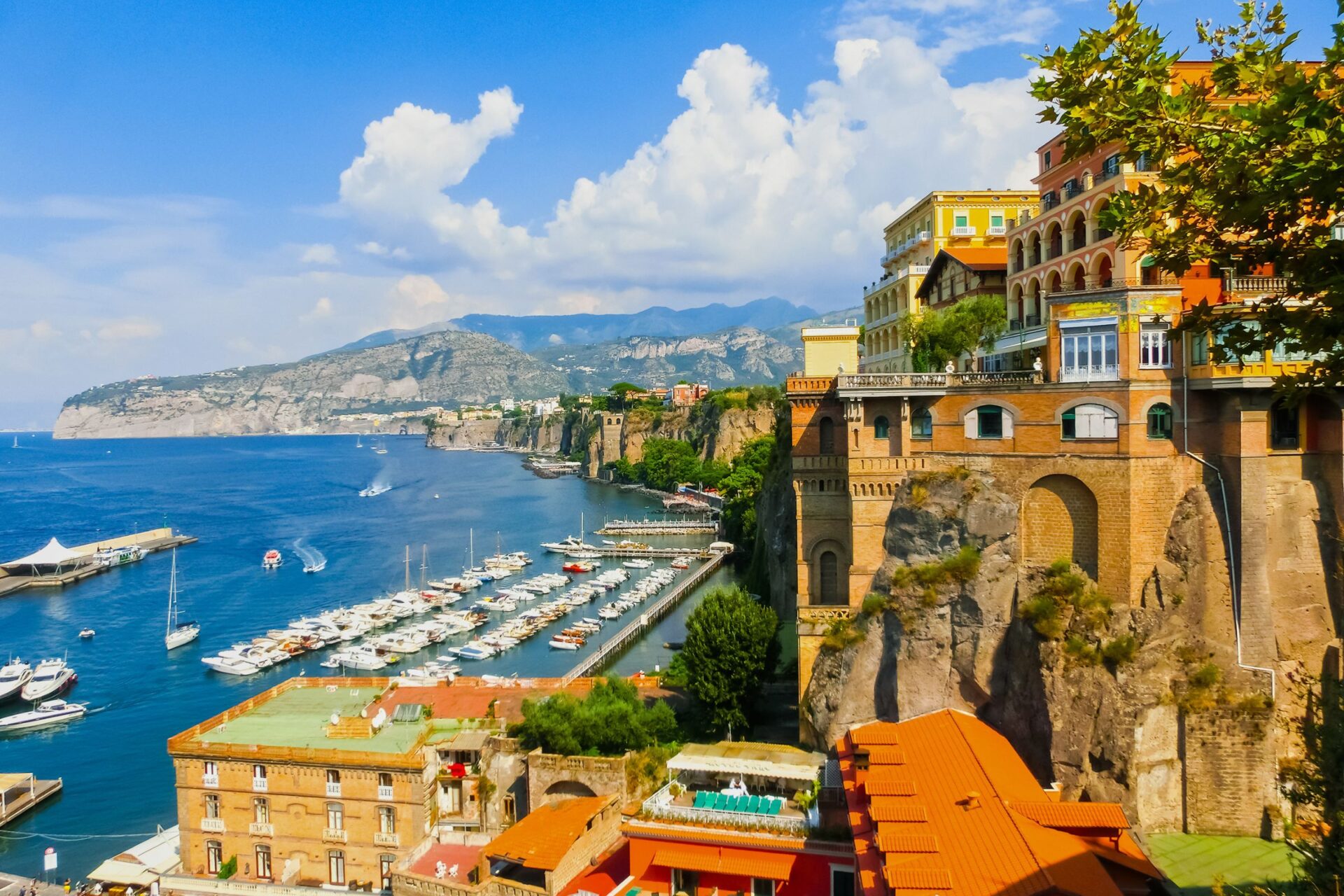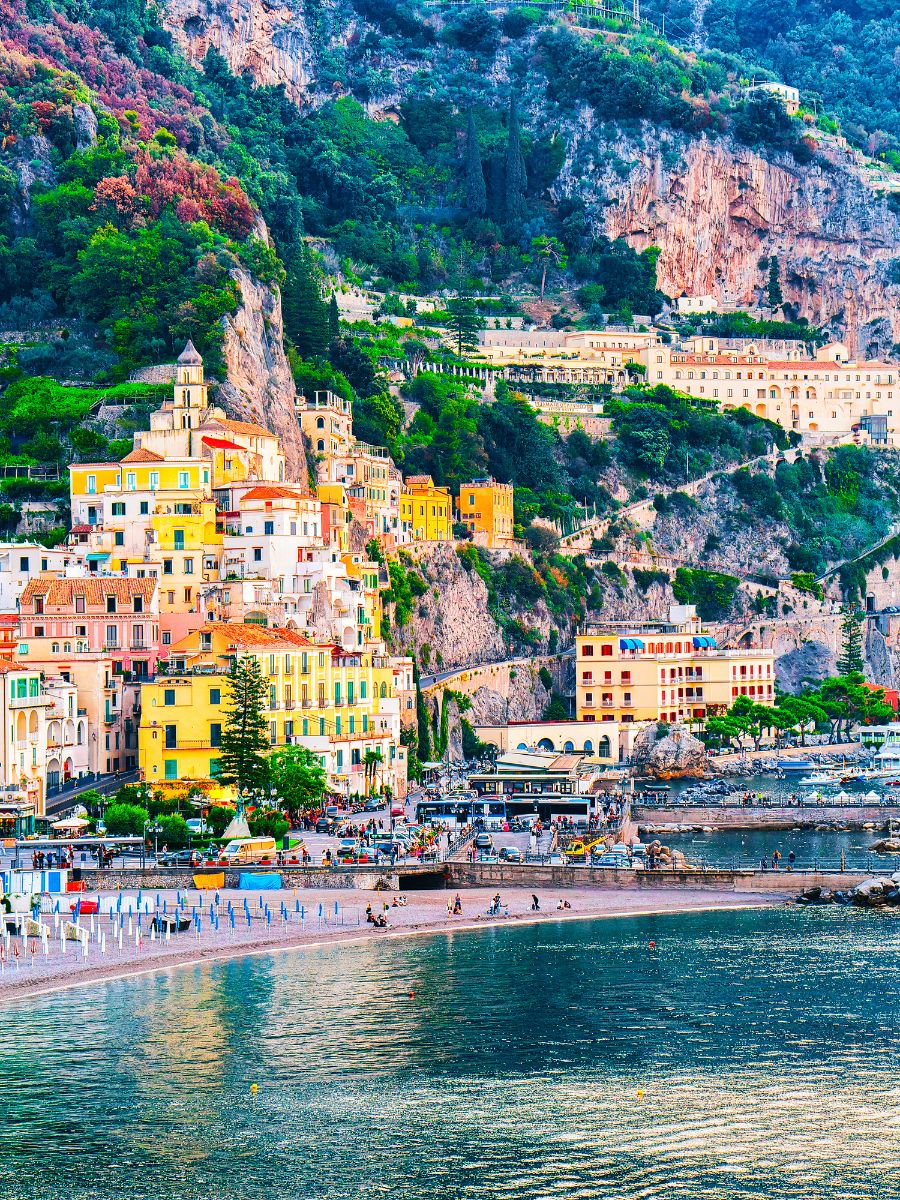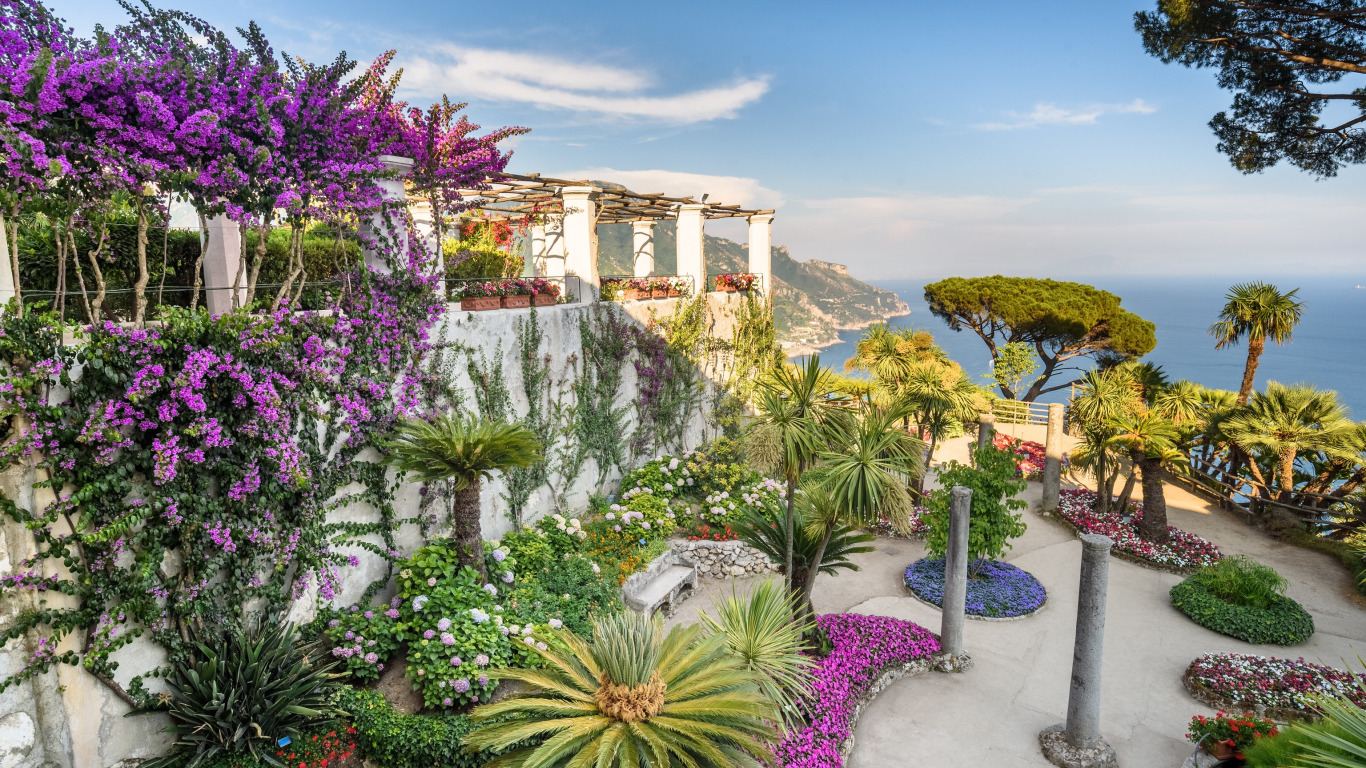Sorrento clings to dramatic cliffs above the sparkling Bay of Naples, and it grabs your senses right away. The air smells like lemon blossoms as you wander through this charming coastal town, where centuries of history mingle with Mediterranean beauty.
Sorrento sits in a prime spot, making it a fantastic base for exploring southern Italy’s most breathtaking destinations—think Amalfi Coast, Capri, and Naples.

I fell for Sorrento last spring, spending two weeks calling this delightful town home. Every morning, I’d sip espresso at a café in the old town, surrounded by shops selling colorful ceramics and bottles of limoncello made from the region’s lemons.
Locals greeted me with warm smiles, clearly proud to share their slice of Italy.
From Sorrento, I could easily hop between the region’s highlights. One day, I wandered the ruins of Pompeii. The next, I took a boat to Capri, where the water glowed impossibly blue.
Even after long days of adventure, I looked forward to Sorrento’s cliffside views and laid-back atmosphere. There’s just something about the mix of convenience and beauty that makes this lemon-scented haven a perfect launchpad for the Bay of Naples.
Why Lemons and Luxury Make the Perfect Base
Sorrento’s blend of citrus-scented air and upscale stays really sets the tone for exploring the Bay of Naples. The region’s famous lemons do more than flavor the local limoncello—they add a refreshing zest to the luxurious surroundings.
The Allure of Local Citrus Retreats
Sorrento’s lemon-scented breezes always seem to calm me after a day out. The groves that wrap around the town aren’t just beautiful; they’re part of the region’s soul.
When I walk the narrow streets, I stop to admire the bright yellow lemons hanging from branches, popping against the blue backdrop of the bay.

Many cafés and restaurants work these local lemons into their menus. I’ve enjoyed everything from fresh lemonade to pasta dishes with a citrus twist.
Shops here sell lemon-based soaps, ceramics, and—of course—the famous limoncello. That intense lemon liqueur is perfect before dinner or as a digestive after. It’s a delicious way to bookend any meal, especially with those coastal views.
Luxury Accommodations Within Lemon Groves
My favorite places to stay in Sorrento blend upscale comforts with real local character. Several luxury hotels nestle right in or beside historic lemon groves, which creates a sensory experience you just don’t get elsewhere.
These hotels often have:
- Private terraces with sweeping Bay of Naples views
- In-house restaurants serving lemon-inspired dishes
- Spa treatments using local citrus oils
- Gardens where you can wander beneath fragrant trees
I especially love accommodations that mix vaulted ceilings and tiled floors with plush bedding and rainfall showers.
Some even offer cooking classes—I learned to make limoncello and classic Sorrentine recipes this way. The combination of luxury and authenticity makes for an Italian getaway I won’t forget.
Balancing Relaxation and Adventure
What makes Sorrento perfect as a base? It lets you choose your own pace.
Some days, I just relax at my hotel, breathing in the lemon-scented air and soaking up the coastal views from a comfy lounge chair.
Other days, I use Sorrento as a springboard for adventure. Its location makes day trips easy to:
- The ruins of Pompeii (35 minutes by train)
- Capri (20 minutes by ferry)
- The colorful Amalfi Coast towns (by boat or bus)
- Naples, with its lively streets and unbeatable pizza (1 hour by train)

After busy days, I love returning to my quiet lemon-grove hideaway. That balance between excitement and peace is what really makes Sorrento stand out.
Exploring Naples: Culture, Cuisine, and Beyond
Naples pulses with energy, history, and some of the best food I’ve ever tasted. The city’s authentic charm shines through winding alleys, artistic gems, and culinary traditions that have influenced the world.
Hidden Gems in the Historic Center
Walking Naples’ Centro Storico feels like wandering a living museum. The tight, winding streets hide treasures most tourists never see.
I stumbled into tiny workshops where artisans still craft elaborate nativity figures by hand, carrying on a tradition centuries old.
Don’t skip Spaccanapoli, the street that literally splits Naples in two. This ancient Roman road slices through the city’s heart and gives you a real taste of Neapolitan life.
The underground Naples tour (Napoli Sotterranea) took me beneath the city. Greek aqueducts, Roman markets, and WWII shelters form a fascinating labyrinth that tells Naples’ story from below.

A Taste of Naples: Culinary Discoveries
Naples gave the world pizza, and tasting a true Margherita here? It’s honestly life-changing. The combo of San Marzano tomatoes, mozzarella, basil, and olive oil on that perfect crust—there’s a reason UNESCO honored Neapolitan pizza-making.
But there’s more. Naples’ street food scene is wild:
- Frittatina: Fried pasta balls with creamy béchamel
- Cuoppo: Paper cones stuffed with fried seafood or veggies
- Sfogliatella: A shell-shaped pastry with sweet ricotta
Coffee is almost a religion here. Standing at a local bar for an espresso is essential. The coffee is strong, comes with a glass of water, and is usually cheaper than you’d expect.

Iconic Landmarks to Visit
The National Archaeological Museum blew me away. It houses the world’s best collection of Roman artifacts, including mosaics and treasures from Pompeii and Herculaneum.
Castel dell’Ovo, Naples’ oldest castle, sits on a tiny island. The “Egg Castle” serves up spectacular views of the bay and Mount Vesuvius. Legend says a magic egg hidden in its walls holds the city’s fate.
The Cappella Sansevero is home to the Veiled Christ, a marble sculpture so detailed it almost doesn’t seem possible. The anatomical machines in the basement are just as fascinating, though definitely a bit eerie.

Getting Around Naples With Ease
Naples’ metro system surprised me—it’s beautiful. Some stations double as art galleries, with installations by famous artists. Toledo Station, often called Europe’s most beautiful metro stop, has a mesmerizing blue light display.
Taxis are handy, but I always insist on the meter or set the fare first. City buses cover a lot of ground, though they get crowded during rush hour.
For day trips, the Circumvesuviana train links Naples to Pompeii, Herculaneum, and Sorrento. It’s not fancy, but it’s cheap and runs often.
Still, I prefer walking. The historic center is compact, and you can reach most attractions on foot without much hassle.

Image Source: Flickr
Unforgettable Day Trips From Your Base
The Bay of Naples is packed with day trips that show off southern Italy’s best scenery, history, and culture. From dazzling coastlines to ancient ruins, these excursions will stick with you long after you leave.
A Journey to the Amalfi Coast
The Amalfi Coast stunned me with its cliffs and villages stacked above the Mediterranean. I suggest starting in Positano, where pastel buildings tumble down to a beautiful beach.
Amalfi itself feels magical. The cathedral dominates the main square, and winding lanes lead to shops selling limoncello made from lemons the size of grapefruits.
Ravello sits higher up, offering jaw-dropping views. Villa Rufolo’s gardens were my favorite spot for coastline vistas. The coastal drive is an adventure in itself, but if you’re not into hairpin turns, the ferry gives you equally gorgeous views.

Island Hopping to Capri
Capri is the Bay of Naples’ crown jewel. I caught an early ferry and spent the day surrounded by luxury and natural beauty.
The Blue Grotto sea cave really is as magical as they say, with its glowing azure waters.
After the grotto, I took the chairlift up Mount Solaro for panoramic island views. The ride is peaceful, gliding over lemon groves and gardens.
Capri Town buzzes with boutiques and restaurants, while Anacapri feels more laid-back. Don’t skip the Gardens of Augustus—the views of the Faraglioni rock formations are picture-perfect.

Discovering Pompeii and Pompei
Walking Pompeii’s ancient streets felt like time travel straight to 79 AD. The ruins preserve an entire Roman city frozen by Vesuvius’ eruption.
I marveled at the mosaics, frescoes, and haunting plaster casts. The amphitheater, Forum, and Villa of the Mysteries especially stood out. I highly recommend hiring a guide—they bring the ruins to life with stories of daily Roman life.
Modern Pompei (with one “i”) sits next to the ancient site. The Sanctuary of the Madonna of the Rosary is a nice break from ruins. For the best experience, I arrive early to dodge crowds and the afternoon heat.

Image Source: Wikimedia Commons
Soak Up the Beauty: Mount Vesuvius and Scenic Landscapes
The Bay of Naples serves up some of Italy’s most breathtaking scenery. Mount Vesuvius’ silhouette dominates the landscape, pairing perfectly with the blue waters below.
Hiking Mount Vesuvius
Hiking up Mount Vesuvius turned out to be one of my favorite experiences. The path to the summit takes about 20-30 minutes—manageable for most people with decent fitness.
Wear sturdy shoes and bring water; the volcanic ground can be uneven and dusty. I found the landscape both barren and, in places, surprisingly green.
The crater at the top is impressive. You can walk part of the rim and peer into the dormant (but not extinct!) volcano that changed this region’s history. Local guides share fascinating stories about Vesuvius’ eruptions, including the infamous one that buried Pompeii.

Panoramic Viewpoints Over the Bay
The hills around the Bay of Naples offer magical views. From Sant’Agata sui Due Golfi, I could see both the Bay of Naples and the Gulf of Salerno—hence the “Two Gulfs” name.
Villa Vesuvio, perched on the hillside, gives you sweeping panoramas of the entire coastline, with Capri and Ischia on the horizon.
If you love photography, these spots are pure gold. The light shifts all day, changing the colors and mood. Bring a good camera—you’ll want to capture these scenes.
Sunset Experiences to Remember
There’s nothing like watching the sun set over the Bay of Naples. The sky turns red, orange, and purple, while Vesuvius stands in silhouette.

I found a cozy restaurant in Sorrento with a west-facing terrace—perfect for evening cocktails as the sky puts on its show.
For something quieter, pack a picnic and head to a public beach or lookout. Lemon-scented air, gentle waves, and the sun dipping into the Mediterranean—it doesn’t get more peaceful than that.
Planning Your Stay: Practical Tips for Travelers
Getting the most out of your Bay of Naples trip takes a bit of planning. From timing your visit to understanding local customs and packing smart, these tips will help you travel like a pro.
Choosing the Right Time for Your Visit
April to June and September to October are the sweet spots here. The weather is warm but not scorching, and the crowds thin out.
July and August get hot, packed, and pricier. When I visited in September, the days were sunny—great for beaches—and the evenings perfect for dining al fresco.
If you’re watching your budget, the off-season (November-March) is worth considering. Some coastal spots close, but you’ll have the main attractions almost to yourself. Ferries to Capri run less often, and the weather can be unpredictable.
Four to nine days usually feels right for this region. I’d say five days minimum if you want to see Naples, Sorrento, and Capri without rushing.

Local Etiquette and Insider Advice
A cheerful “Buongiorno” or “Buonasera” goes a long way. Even my clumsy Italian has opened doors to friendlier conversations.
Meals run on a different clock—lunch starts around 1:30 PM, dinner rarely before 8:00 PM. Coffee rules are strict: cappuccino in the morning, espresso any time.
When visiting churches, cover your shoulders and knees. It’s a simple gesture locals appreciate.
Public transport doesn’t always run on time. I add extra time to my plans, especially for ferries or trains.
Tipping isn’t expected, since service is usually included, but rounding up for great service feels right.

Essential Packing List
Light, breathable clothes are a must for the Mediterranean climate. I always pack a light sweater for cool evenings, even in summer.
For your feet:
- Comfortable walking shoes (the ancient sites are rough underfoot)
- Sandals for the beach and casual strolls
- One dressier pair for nicer restaurants
Don’t forget:
- Sunscreen (the sun here is no joke)
- Sunglasses and a hat for shade
- A refillable water bottle (public fountains are everywhere)
- A small daypack for outings
- Adapter plugs for Italian outlets (type F or L)
A lightweight raincoat or umbrella comes in handy—even summer gets the odd shower. I always carry a scarf; it’s useful for sun, style, or covering up in churches.

